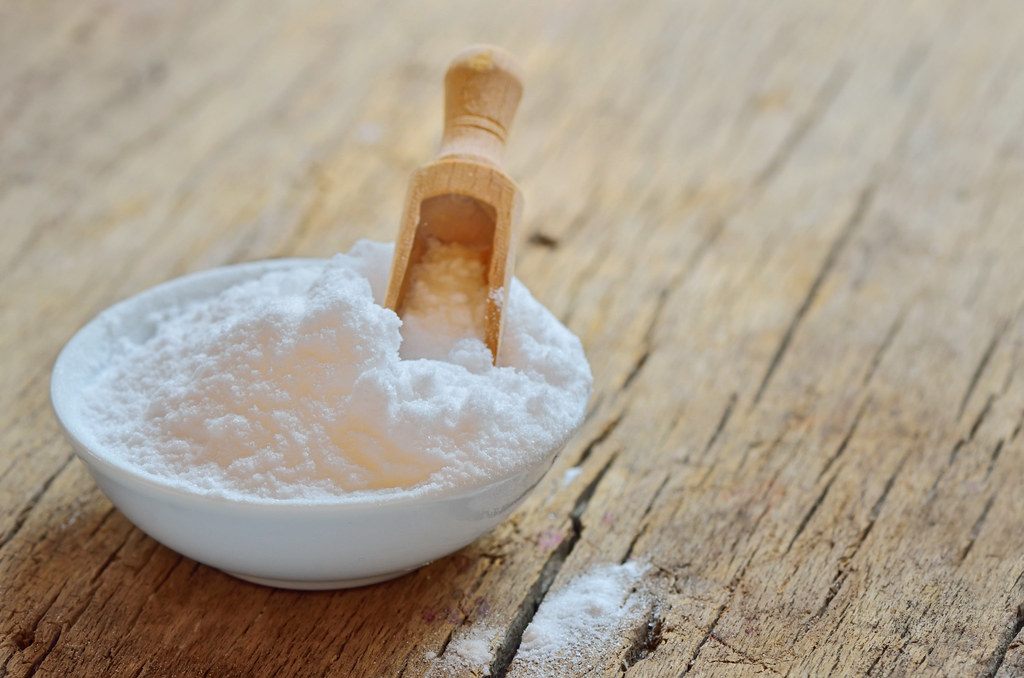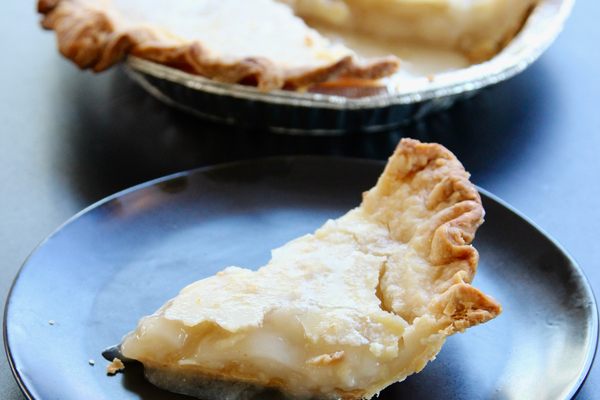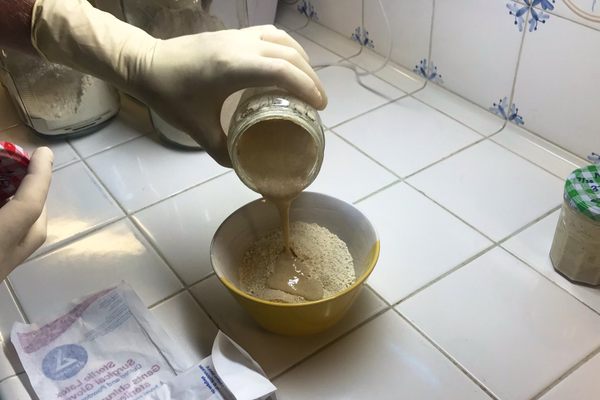How to Use Baking Soda Like a Scientist
This ingredient belongs in both the laboratory and the kitchen.
This article is adapted from the July 23, 2022, edition of Gastro Obscura’s Favorite Things newsletter. You can sign up here.
Whipping up a recipe can feel awfully similar to conducting a science experiment. Either one could involve adjusting burners or measuring out various powders and liquids, all while carefully watching to make sure your project doesn’t explode, burn, or turn a funny color.
Cookbook author and food writer Nik Sharma happens to be both a cook and a scientist. Before he turned his hand to recipe-writing, Sharma was a molecular biologist engaged in biomedical research. In his writing, especially 2020’s The Flavor Equation, Sharma is educating the food world on the science behind the most common cooking techniques and ingredients.
In this article, Sharma shares some of that know-how, with a deep-dive into a humble ingredient whose infinite uses makes it the culinary equivalent of a Swiss Army Knife.
Chemistry in the Kitchen
My fascination for cooking and chemistry developed simultaneously. It all started in my high school chemistry lab, during a lesson on the relationship between acids and bases. Sodium bicarbonate—or baking soda—was one of the first ingredients that made me realize that a kitchen is, in essence, a laboratory.
Sodium bicarbonate is a dramatic chemical. As students, we learned why sodium bicarbonate bubbles when mixed with water or an acid like vinegar or lemon juice, and watched as it turned a wet paste of yellow turmeric powder to an intense shade of red. But what made it even more intriguing was that sodium bicarbonate also sat in my mother’s pantry jar. Even in the classroom, it reminded me of my favorite food, cake.
Years later, after working in labs and kitchens, I realized that baking soda is perhaps one of the most powerful ingredients in our kitchen pantries. I’d rank it right up there with lemon juice and salt.

The Rise of Baking Soda
Bakers have used carbonates as chemical leaveners since the Middle Ages. These substances release carbon dioxide bubbles when dissolved in water, or mixed with an acid. In a batter, this has a lightening, lifting effect.
Arab cooks leavened cakes with wood ash or potash (potassium carbonate) and though this method was largely unknown to bakers in the West, that changed in the 18th century, when it became popular to cook with pearlash, made from water-rinsed wood ashes.
Pearlash was used to raise cakes that contained acidic ingredients, such as sour milk. Unfortunately, it left an unpleasant aftertaste in baked goods, and as wood sources in Europe dwindled, the French Academy of Sciences set up a contest to encourage researchers to develop a better alternative.
While Nicolas LeBlanc did win the contest in 1791, his method of producing soda ash from salt and coal still contained potash, which contributed to the bitter flavor. But eventually, sodium bicarbonate was isolated from this mixture and bakers began to use it in their cooking.
Sodium bicarbonate is in fact a salt, a product of the union of a metal—sodium—and carbonic acid. This method of producing baking soda was discovered in 1801 by pharmacist Valentin Rose, the younger son of the notable Rose family of German chemists. Made this way, baking soda is white in color and tastes rather brackish.
Today, baking soda is a baker’s mainstay. It’s most often used to help build airy and spongy structures in cakes, cookies, and quick breads like soda bread.
Soda Science
Baking soda is naturally alkaline, raising the pH when added to liquids or foods. Often, to reduce the acid in coffee or a very sour soup, I’ll stir in a tiny pinch of baking soda to neutralize and counteract the acidity.
The alkaline nature of baking soda also manifests itself visually by changing the color of some pigments in food—the anthocyanin present in blueberries, purple cabbage, and purple asparagus turns blue when it meets baking soda. In contrast, the golden pigment curcumin in turmeric turns red.
If I’m cooking dried beans, I’ll first soak them overnight in a brine made with baking soda and salt, or cook pre-soaked beans with a smaller quantity of both. If you’ve ever cooked dried beans, only to have them turn out unpleasantly hard, this is the trick for you.
Pectin is a structural carbohydrate that gives plants and seeds their hardness. The sodium present in baking soda pops out the calcium and magnesium present in the bean’s pectin, helping the bean cook faster and taste creamier.
Baking soda can also act as a catalyst in two important food reactions. A tiny pinch of baking soda to vegetables or meats while roasting or sautéing accelerates the rate of sugar caramelization, and supercharges the Maillard reaction, the rate at which the amino acids in proteins react with sugar. The result is delicious bittersweet flavors, attractive golden-brown colors, and nutty aromas.
Every time I look at the jar of baking soda sitting inside my pantry, I smile. A chemical that arose from burned wood and ash made its way to the chemistry lab and into every kitchen across the globe. This one simple ingredient has so much transformative potential. Baking soda is the queen of my pantry.
Tips and Tricks
- When making caramel from sugar or even trying to caramelize milk, a minuscule amount of baking soda will rapidly help the sugars turn brown and develop their nutty caramel aroma.
- A pinch of baking soda mixed into a glass of water acts as an antacid to reduce heartburn.
- A dash of baking soda in brewed coffee can help reduce some of the acidity.
- Like beans, starchy vegetables such as potatoes and cassava also benefit from boiling in baking soda; the baking soda softens the pectin, which helps loosen up the starch granules in these vegetables, resulting in a softer texture.
- Outside cooking, baking soda has many uses. It can also be used as a mild soap along with vinegar to clean kitchen counters, and stubborn grease marks.
Gastro Obscura covers the world’s most wondrous food and drink.
Sign up for our email, delivered twice a week.



































Follow us on Twitter to get the latest on the world's hidden wonders.
Like us on Facebook to get the latest on the world's hidden wonders.
Follow us on Twitter Like us on Facebook